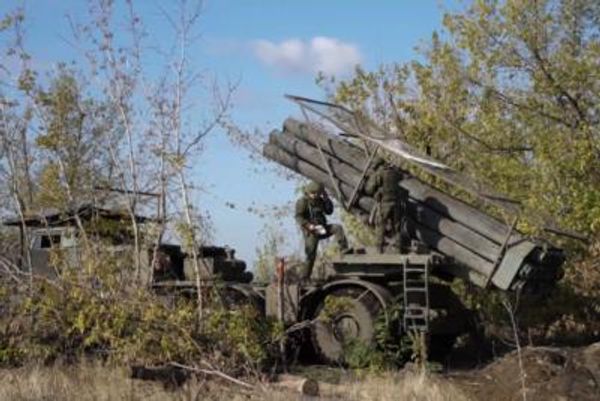Victoria's COVID-19 hospitalisations have risen to 1,206, up from 1,173 reported on Wednesday, and a further 15 deaths were recorded in the state.
Of the patients in hospital, there are 122 in intensive care, 40 of whom are receiving ventilation.
It comes as Victoria resumes IVF treatments, following a public campaign urging the government to reinstate the fertility procedure.
IVF treatments were halted earlier this month as part of a three-month suspension of non-urgent elective surgeries in response to the Omicron wave.
But the Victorian government has allowed the in vitro fertilisation procedures to go ahead once again, saying the workforce and equipment used was not "imperative" to support the pandemic response.
Premier Daniel Andrews said the decision to suspend the procedures was based on advice around staffing shortages, but said that position was reconsidered.
"You kind of start with the worst-case position, and try to reinstate whatever you can," he said.
Mr Andrews apologised "for any sense of distress or pain" as a result of the suspension, as did the Acting Minister for Health James Merlino.
Some fertility services will resume today, while procedures are expected to resume from Tuesday, January 25.
Other non-essential surgeries will remain suspended amid immense strain on the hospital system.
State orders 166 million more RATs, supply challenges remain
A further 166 million rapid antigen tests (RATs) have been ordered by the government.
Premier Daniel Andrews said transportation issues as a result of the volcanic eruption in Tonga have hampered delivery of RATs recently, contributing to a shortage of kits around the state.
"We had a couple of flights this week that did not land — they did not take off and did not obviously arrive — on the basis of the ash cloud," Mr Andrews said.
"So there are many and varied challenges as we continue to build to the stockpile."
Out of an initial bulk order of 44 million, 3 million RATs have already arrived last week to Victoria, and a further 4.5 million were delivered this week.
Opposition leader Matthew Guy said the government should have ordered the RATs "months ago", and criticised the delays.
"That is too slow and not good enough," Mr Guy said.
"I think Victorians are sick of being told one thing and the reality being something very different."
The state has officially recorded 21,966 new COVID-19 infections, but the true number of new cases in the community could be much higher.
About half of the state's cases have been diagnosed using RATs, with yesterday's tally reported from 11,693 PCR results and 10,273 rapid testing kits.
Considering these figures, Mr Andrews said it was clear COVID-19 was prevalent in Victoria.
Test turnaround time reduces, cases stabilise
Victoria's COVID-19 Commander Jeroen Weimar said the pressure put on the state's PCR testing sites had eased as a result of the RAT self-reporting system.
Pressure on the system over the Christmas and New Year period, driven by rising case numbers, a lack of RATs and interstate testing requirements, saw hours-long queues for tests and days-long waits for results.
More than 100,000 tests were recently discarded because the swabs were no longer considered valid.
Mr Weimar said waiting times at PCR testing sites had dropped to under 30 minutes on average across the state network, and the wait time for results had reduced too.
"86.5 per cent of test results are now coming back by the following day, that's getting into the zone we've always been in and the zone we want to stay in."
Mr Weimar said daily case numbers also look to be stabilising.
Chief Health Officer Brett Sutton said on Monday that he expected the state has reached, or is fast approaching, a peak of new COVID-19 infections, but warned the state's hospitalisations could continue to climb into February.
There are now at least 246,894 active cases in the state.
About 27 per cent of Victorian adults have received three doses of a vaccine so far.
Yesterday, the government announced the interval between the second dose and booster shot will be reduced from four to three months.
More regional hospitals make Code Brown call
Mildura Base Public Hospital has issued its own Code Brown, just a day after the emergency alert was activated for all Melbourne hospitals and six other regional hospitals.
The Mildura site was not included in the government's initial declaration, but CEO Terry Welch said the hospital was in an "extreme position".
"These are very proactive steps that we are trying to put in place to mitigate where we are now," he said.
"We're certainly in the position where Code Brown is totally appropriate."
Mr Welch said the hospital would be making a "call to arms" in the coming days to try and attract former medical staff to help ease workloads at the hospital.
The Code Brown means hospitals can redeploy workers to areas of greatest need, postpone leave to boost staffing numbers, and redistribute resources to ensure critical patients are prioritised.
It is usually declared by individual hospitals, but in an unprecedented decision the Victorian government decided to activate the alert for multiple sites to help ease massive pressures being put on health services amid the surge in Omicron cases.
Ararat Hospital has been operating under Code-Brown conditions for several months, with people being retrained and redeployed to fill staffing shortages, East Grampians Health Service's chief executive Nick Bush said.
Mr Bush said 25 of their 300 staff were currently isolating with COVID-19 or as close contacts.
He said despite the staff being fatigued after two years of the pandemic their response to the Code Brown settings had been outstanding.
"People are being called to work in different areas," Mr Bush said.







